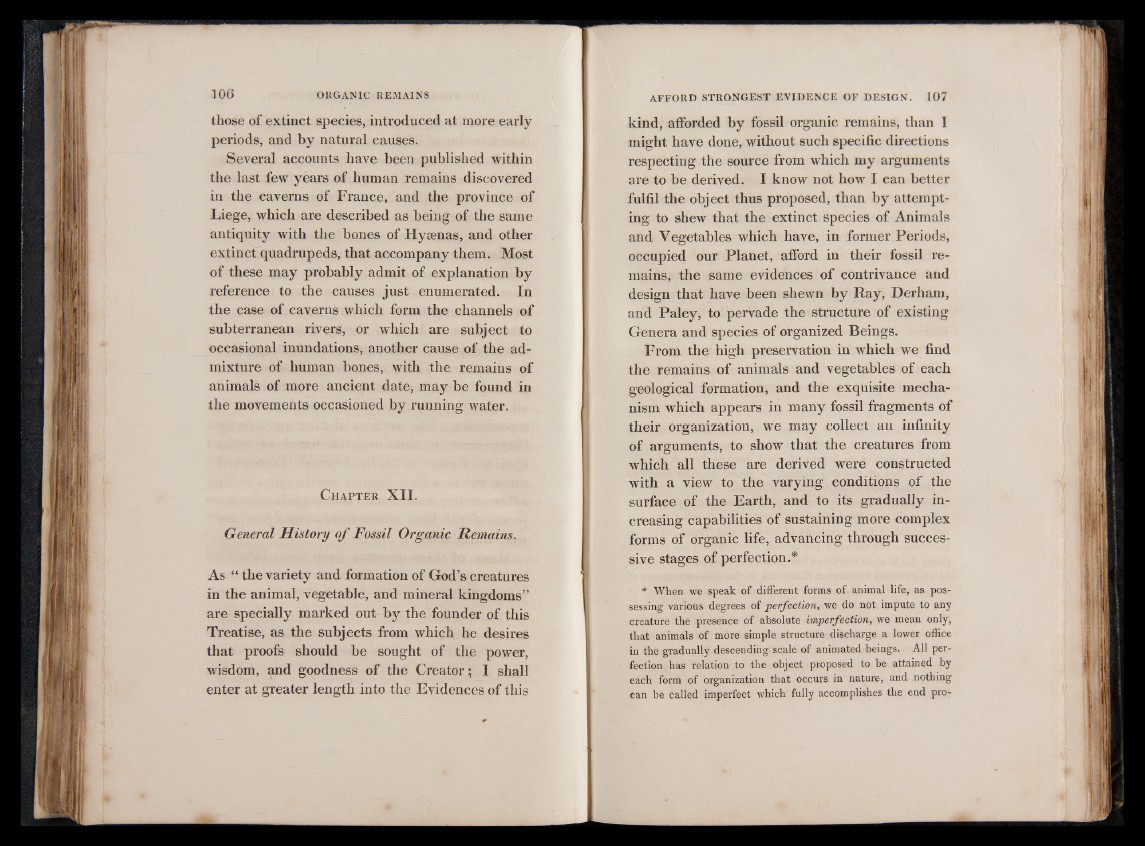
those of extinct species, introduced at more early
periods, and by natural causes.
Several accounts have been published within
the last few years of human remains discovered
in the caverns of France, and the province of
Liege, which are described as being of the same
antiquity with the bones of Hysenas, and other
extinct quadrupeds, that accompany them. Most
of these may probably admit of explanation by
reference to the causes just enumerated. In
the case of caverns which form the channels of
subterranean rivers, or which are subject to
occasional inundations, another cause of the admixture
of human bones, with the remains of
animals of more ancient date, may be found in
the movements occasioned by running water.
C h a p t e r XII.
General History o f Fossil Organic Remains.
As “ the variety and formation of God’s creatures
in the animal, vegetable, and mineral kingdoms”
are specially marked out by the founder of this
Treatise, as the subjects from which he desires
that proofs should be sought of the power,
wisdom, and goodness of the Creator ; I shall
enter at greater length into the Evidences of this
kind, afforded by fossil organic remains, than I
might have done, without such specific directions
respecting the source from which my arguments
are to be derived. I know not how I can better
fulfil the object thus proposed, than by attempting
to shew that the extinct species of Animals
and Vegetables which have, in former Periods,
occupied our Planet, afford in their fossil remains,
the same evidences of contrivance and
design that have been shewn by Ray, Derham,
and Paley, to pervade the structure of existing
Genera and species of organized Beings.
From the high preservation in which we find
the remains of animals and vegetables of each
geological formation, and the exquisite mechanism
which appears in many fossil fragments of
their organization, we may collect an infinity
of arguments, to show that the creatures from
which all these are derived were constructed
with a view to the varying conditions of the
surface of the Earth, and to its gradually increasing
capabilities of sustaining more complex
forms of organic life, advancing through successive
stages of perfection.*
* When we speak of different forms of animal life, as possessing
various degrees of perfection, we do not impute to any
creature the presence of absolute imperfection, we mean only,
that animals of more simple structure discharge a lower office
in the gradually descending scale of animated beings. All perfection
has relation to the object proposed to be attained by
each form of organization that occurs in nature, and nothing
can be called imperfect which fully accomplishes the end pro